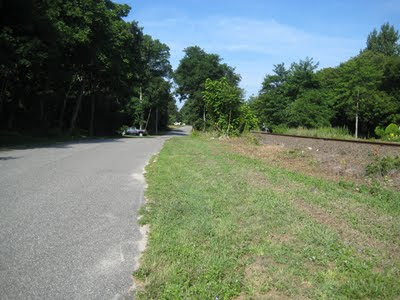The trinity of convoluted and folded bedrock formations beneath the Island of Manhattan – Manhattan Schist, Inwood Marble, and Fordham Gneiss – rises and falls deep beneath the surface, dictating the peaks and valleys in the Manhattan skyline as skyscrapers seek stable bedrock. To this amateur, the geologic history of Manhattan Island baffles. The North American Tunneling: 2008 Proceedings (edited by Michael F. Roach) puts it nicely, "The geology of Manhattan is an open question" and proceeds to describe a complex interplay of rocks and forces. Betsy McCully offers an accessible explanation on her website New York Nature.
The Manhattan Schist, a “blend of granite, mica, gneiss and garnet” as Kuchment describes it, perplexes the experts with apparently no agreement as to its age. A billion years – back into the Precambrian – as McCully suggests? Geologists Pamela and Patrick Brock think otherwise, positing that, “though its age and origin have been unclear,” it is an allochthon (a large block or sheet of rock moved a substantial distance by tectonic forces) formed approximately 570 million years ago, which would put it closer to the end of the Precambrian, in the Ediacaran Period. (Bedrock Geology of New York City: More Than 600 M.Y. of Geologic History, Field Guide for Long Island Geologists Field Trip, October 27, 2001.) I find myself confused over the U.S. Geological Survey treatment of this rock. Its online spatial data proffers a conservative estimate of the age of the Manhattan Formation that also highlights the uncertainty of it all. The entry for “Geologic Age” for this formation is a definitive “Ordovician?” (That would be 488 to 444 mya.) The entire USGS spatial data description of the Formation seems composed mostly of question marks. Yet, in a separate treatment of the geology of northern Manhattan Island, the USGS refers to the "Cambrian Manhattan Formation."
Regardless, this is very old rock and now, after being ground up to make way for commuters, it lives on, in a way. A stream of trucks hauls away the crushed rock to city construction sites. I don’t know if that’s a pleasing thought or not, this product of magnificent powerful forces being used for building up land or landscaping. For some reason, I think of Rodney Dangerfield, “I don’t get no respect.”
Of course, this goes on all the time. For better or worse (frequently the latter), we humans are equal opportunity users of the materials that surround us. I love the buildings made of Indiana limestone that grace so many capital cities across the country. To peer closely at these walls is to look back millions of years at massive numbers of fossilized remains (death on an incredible scale). Curiously, I’ve never been upset about diatomaceous earth, that fossiliferous sedimentary rock, being used for, heaven forbid, kitty litter.
In contrast, I have hesitated over the generosity of the PotashCorp which trucks reject material from its Lee Creek Mine to dumpsites where the North Carolina Department of Transportation uses it to repair highways. Now, that does seem an affront to the myriad Miocene fossil shark teeth, ray plate fragments, shells, and the like that abound in that material. Not rarities but, to this amateur, treasures nonetheless. The product of a few hours digging through a pile of Lee Creek reject material appears below.
Mining operations, construction crews, and highway departments can be great friends to geologists and paleontologists. Lee Creek Mine is a premier example of a mining operation that has fueled paleontological research. The rocks and fossils exposed at road cuts offer access to riches that otherwise lie sealed off beneath earth and forests. The bulldozing at housing development sites tears off the top soil and, with luck, fossils see their first light in millions of years. Sadly, it’s often a fleeting moving back of the curtain.
But one highway maintenance crew is now on my shit list. The other day, I wandered down from my cottage to the road that runs along the nearby railroad tracks. The summer ritual of reintroducing myself to wild flower friends was about to begin – if past years were any indication, at least 20 different species were waiting to be saluted. Indeed, I had the thought of trying to do a full inventory of all the species present at different times during my stay.
Not to be. The mowers from the county highway department had cut a murderous swath along the road the day before.
Well, a few bits of color survived. Some low lying Chicory ducked under the blades and a couple of stalks of brave Yellow Goats-beard must have swayed at just the right moment.
Perhaps this citizen scientist will travel down this road monitoring the recovery of the flowers after their mass destruction.








No comments:
Post a Comment